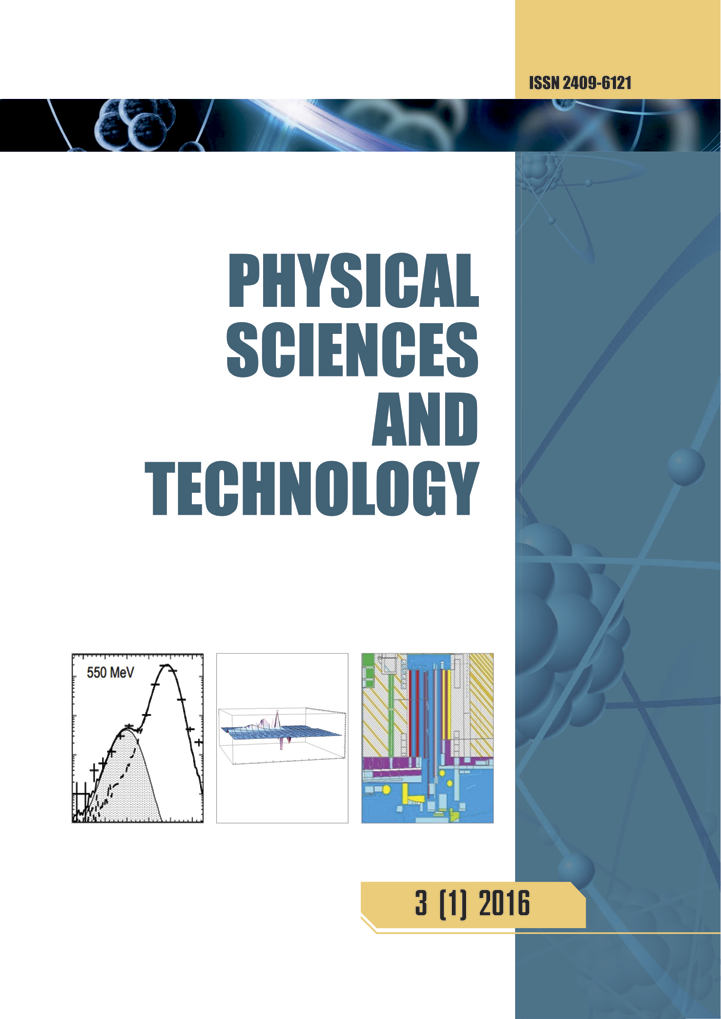Prediction the durability of heat exchangers made of 06KhN28MDT alloy (analogous to AISI904L steel) to crevice corrosion during their operation in recycled water
DOI:
https://doi.org/10.26577/phst.2023.v10.i2.07Abstract
Plate-like heat exchangers made of the 06KhN28MDT alloy (similar to AISI904L steel) in the production of sulfuric, phosphoric, orthophosphoric acid, etc are used. It is resistant to local corrosion in these media, but can be exposed to crevice corrosion between the corrugations of adjacent heat transfer plates of plate-like heat exchangers from the side of circulating water, which is used to cool the technological product. In the article, the resistance of the alloy to crevice corrosion in model circulating water of 3% NaCl by electrochemical methods has been investigated. For five industrial melts of the alloy, anodic potentiodynamic curves of forward and reverse move have been constructed and potentials Er, Ecor, Ecrew have been determined. The resistance of the 06KhN28MDT alloy to crevice corrosion by the Ecrew potential and the basis of the resistance of the alloy to this corrosion in the crevice ΔE has been estimated, which simulated a gap between adjacent plates of plate-like heat exchangers of 0.3 mm. The Ecrew potentials are the most positive (1.10 and 1.13V) in melts of alloy 1, 5, and in melts 2, 3 – the most negative value (0.58V) has been established. This is due to the fact that they have the highest content of Cr (24.29 and 23.44 wt %) and the total content of Mo, Ti and Cu (6.41 and 6.19 wt %), and in melts 2, 3 – the smallest Cr (22.69 and 21.82 wt. %) and the total content of Mo, Ti, Cu (6.05 and 5.75 wt. %). Taking into account the literature data, it is assumed that this trend is related to the formation of mixed Cr, Mo, Ti oxide films enriched in Cr on the surface of the alloy, since Cu promotes its diffusion to the oxide film. Melts 1, 4, 5 with the lowest C content (0.050; 0.048; 0.050) have the most positive values of this potential (1.10; 1.10; 1.13V), and No 2, 3 are the most negative (0.58V) has been found, which may be due to the carbon content greater than its solubility in the solid solution of austenite (0.067 and 0.068 mass .%). No correlation between the Ecrew potential of the alloy and the volume of titanium nitrides in it has been found, but it that the potentials Er, Ecor, Ecrew significantly depend on the volume of titanium sulfides in the melt 1 (0.0091 vol. %), which is more than twice as high as in melts 2, 5 has been established. Evaluation of the resistance of the alloy to crevice corrosion in circulating water by ΔE, which was determined by the difference in the potentials of Еr and Ecor, showed similar results, in particular melts 1, 4, 5 are the most resistant to this local corrosion (ΔЕ = 1.2; 0.95; 0.98V), and No 2, 3 (ΔЕ = 0.93; 0.64V) are the least resistance. This is due to the influence of C, Cr, Mo, Ti and Cu, as well as the volume of titanium sulfides on the Er and Ecor potentials, similar to their influence on Ecrew. It is shown that pl. 1, 5, which are the most resistant to this local corrosion, have the minimum values of the mean diameter of the austenite grain (11 and 15 μm), and No 2, 3, which are most prone to it - 24 and 29 μm. But in melt 4, which occupies an intermediate place, this indicator is 31 μm. This is most likely due to the low probability of crossing titanium carbonitrides with austenite grain boundaries, where local corrosion damage originates. Melts 1, 5, which are the most resistant to crevice corrosion in circulating water, have the largest area of local damage has been established. This is due to the redistribution of currents between a smaller number of local damages due to the repassivation of a larger part of them. Manufacturers of plate-like heat exchangers to choose melts of the 06KhN28MDT alloy with a minimum content of C and a maximum of Cr, Mo, Ti and Cu with a mean austenite grain diameter of up to 15 μm are recommended.




